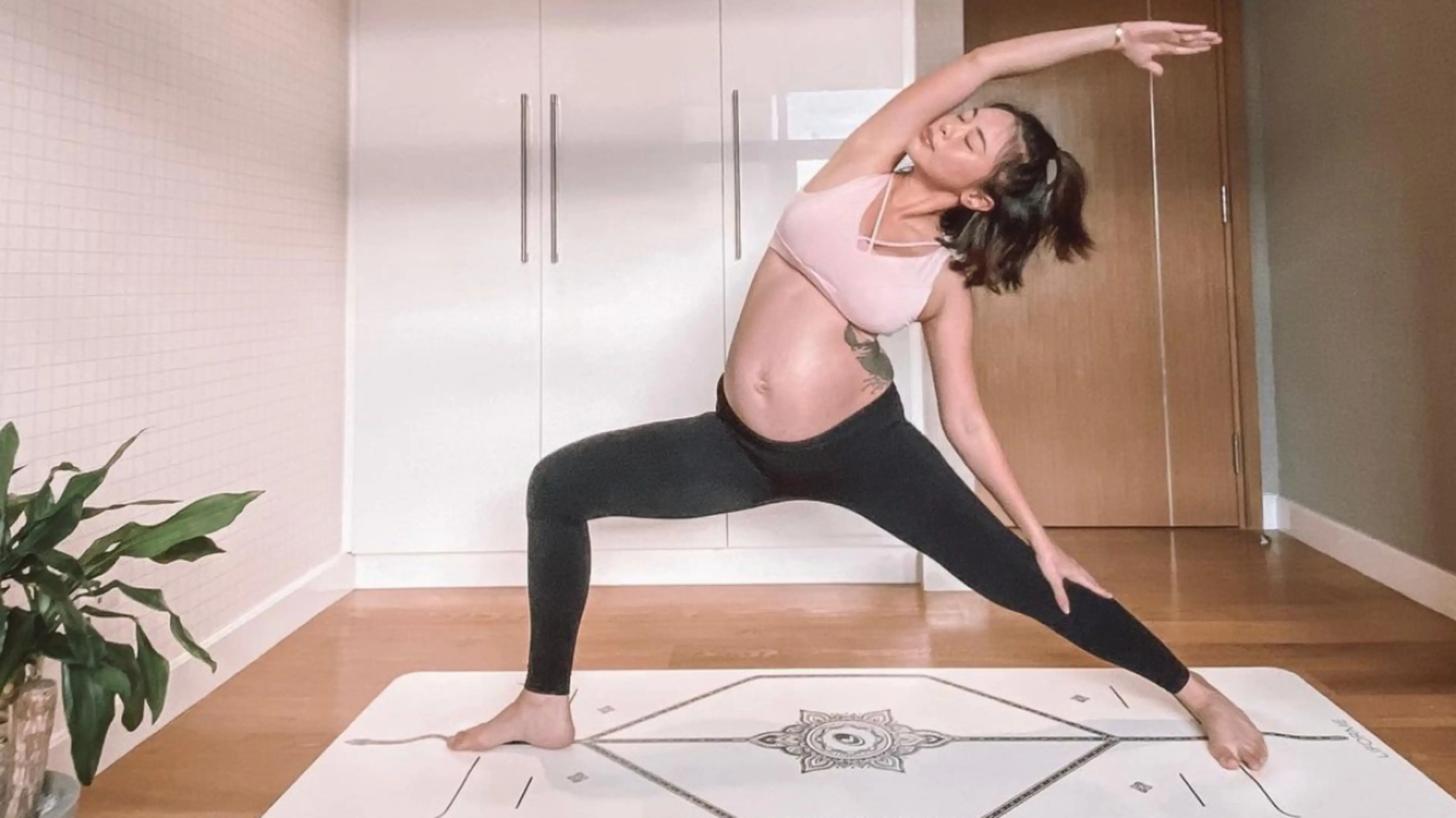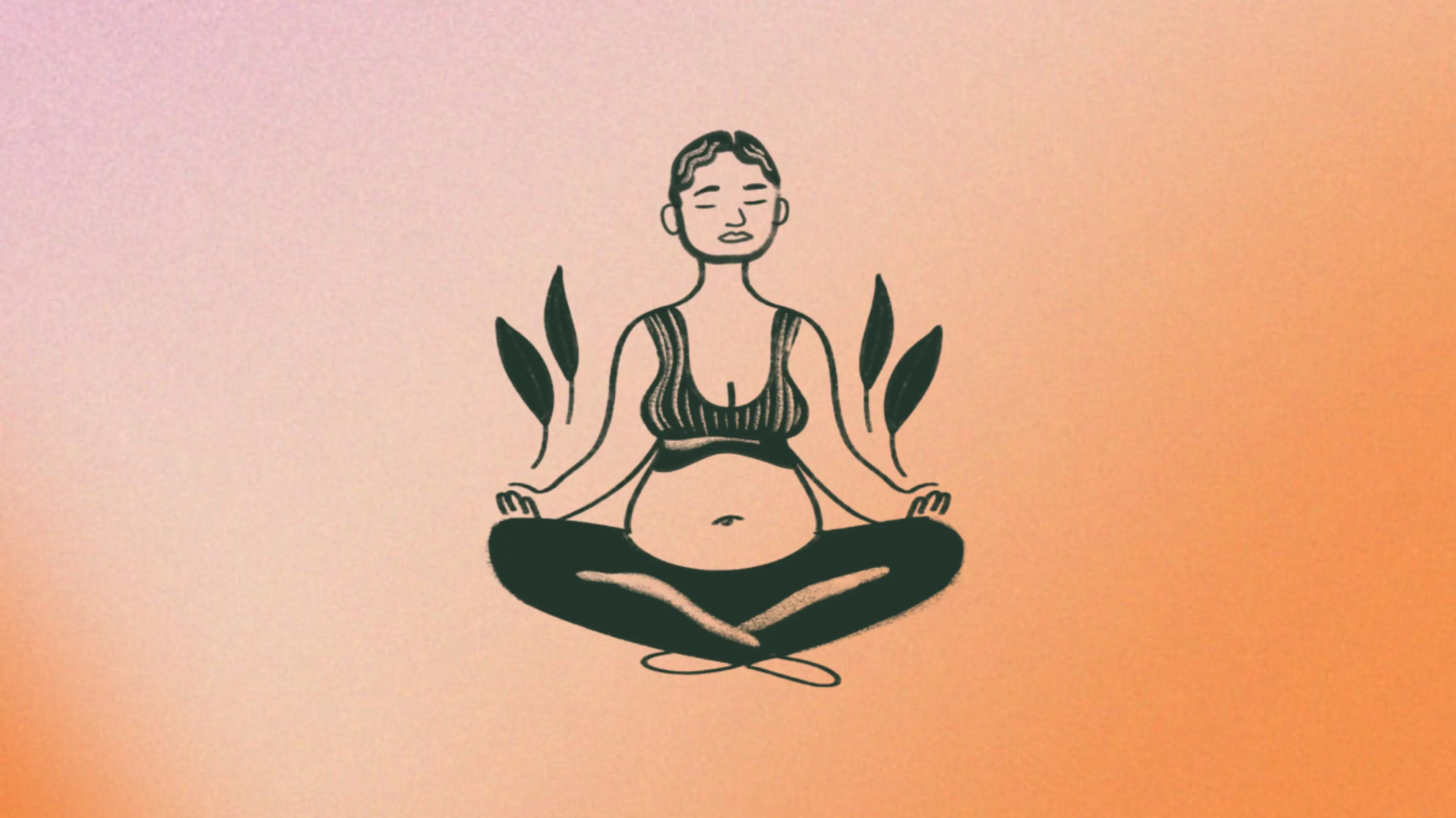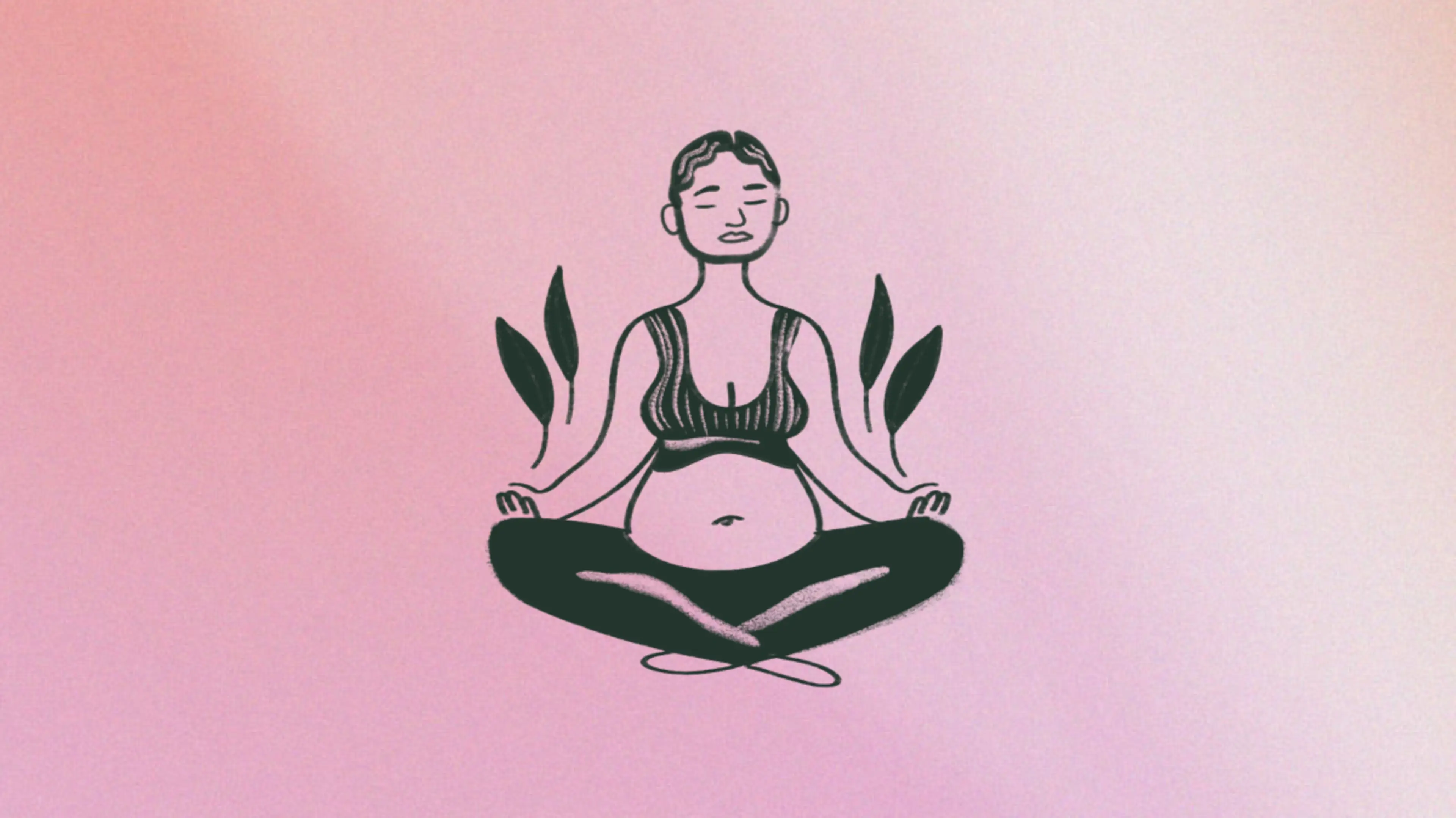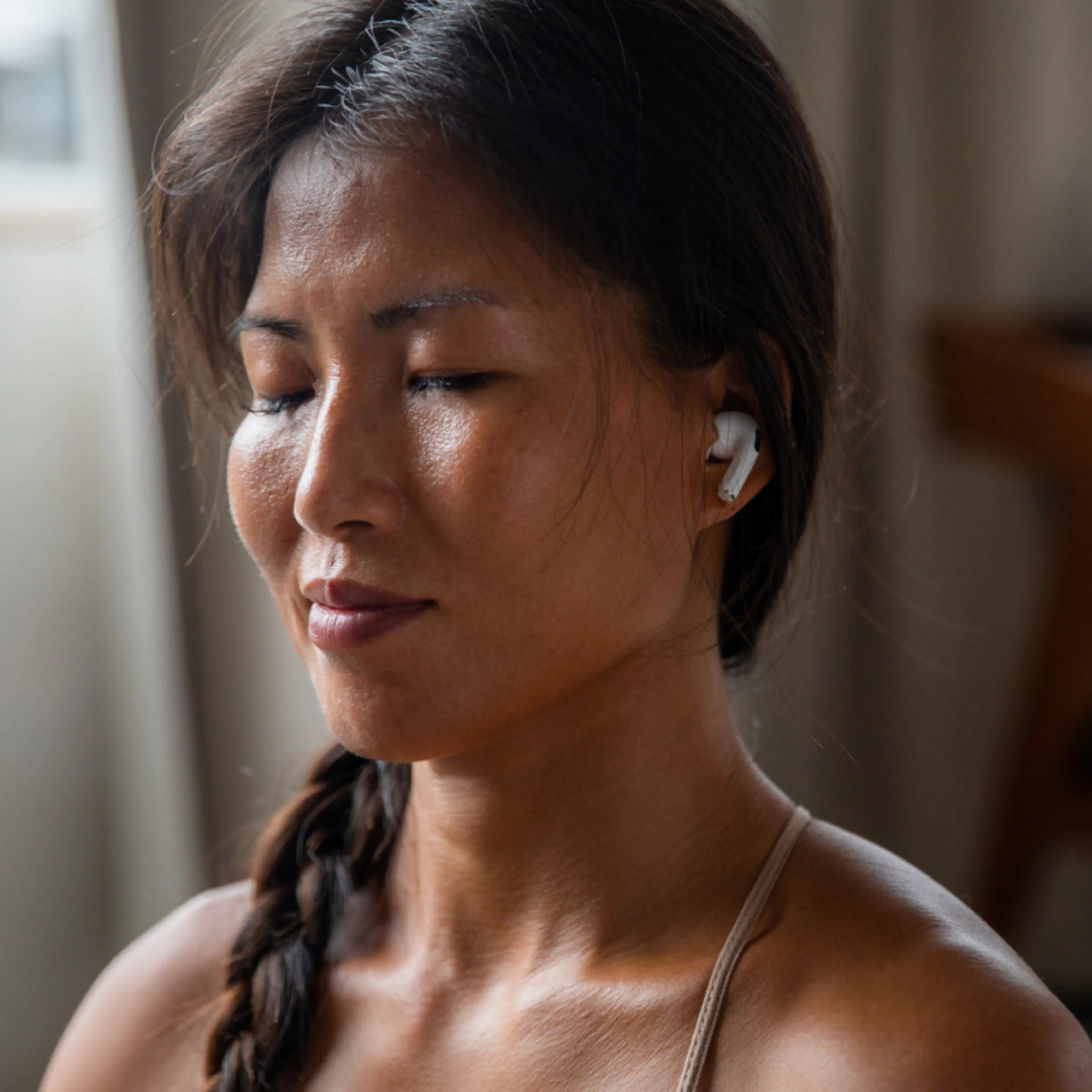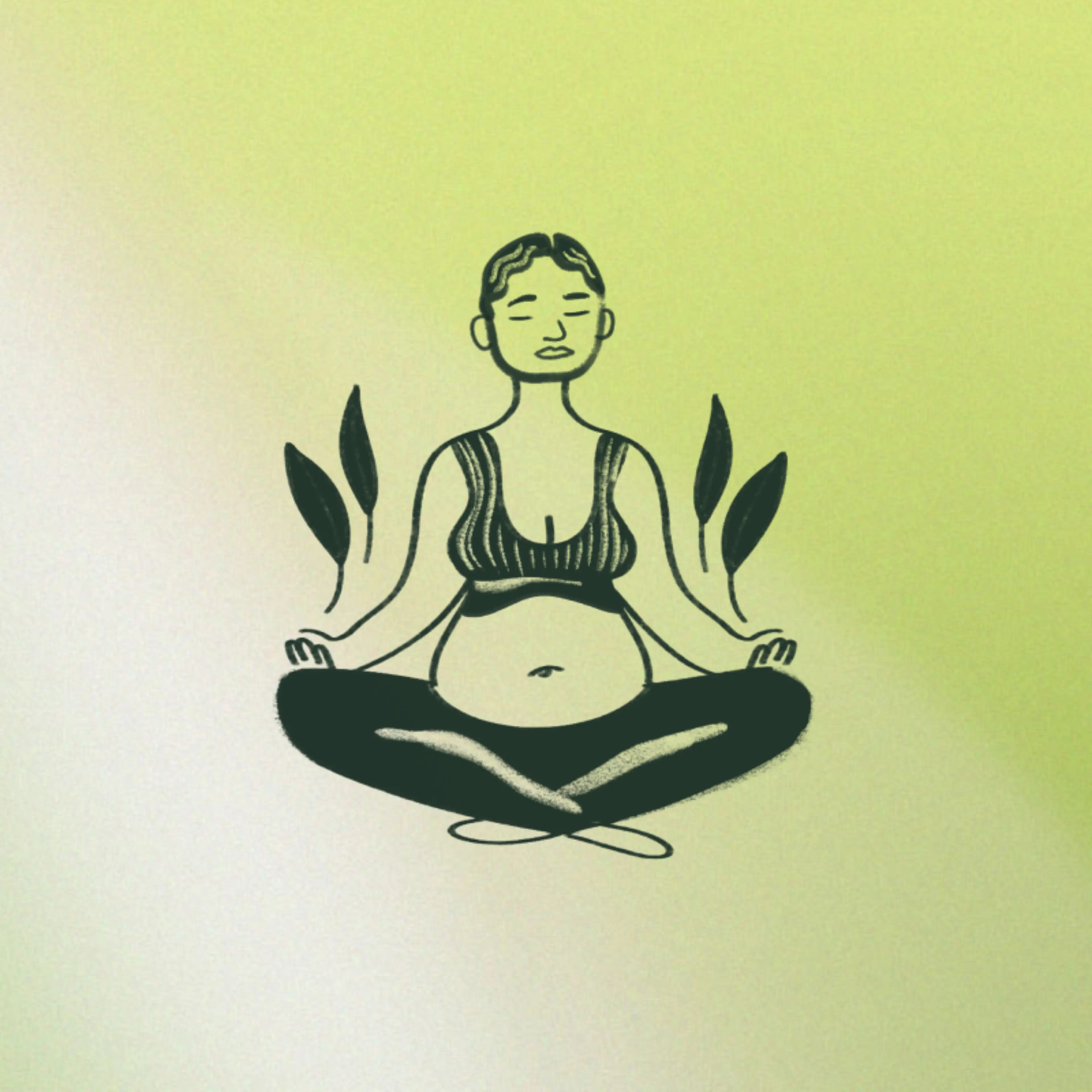Establishing or maintaining an exercise routine is important for a healthy and strong pregnancy, but sometimes it can be difficult to know what’s safe for the pregnant body or what is most effective at relieving symptoms like sore muscles or aching joints. Enter: prenatal yoga, which is both a safe and effective exercise for pregnancy.
Never done yoga before? Or maybe you’re a fan of regular yoga and not sure how the prenatal version is any different than what you’re already doing. We talked with Leonora Willis1 , professional yoga instructor, doula and co-owner of Barefoot Movement yoga studio, about what makes yoga a good option for exercise during both pregnancy and postpartum.
What Is Prenatal Yoga?
Prenatal yoga is a modified version of traditional yoga that is intended to be more comfortable for pregnant people while still allowing for stretching, strengthening and meditation. If you’ve practiced traditional yoga prior to becoming pregnant, you might notice that some poses can be difficult, uncomfortable or near impossible with everything else going on in your body. From loose ligaments and tender breasts to nausea and, obviously, a large and heavy pregnant belly, prenatal yoga makes allowances for any and all symptoms you might be feeling so you can stay active with safe exercise throughout your pregnancy.
Prenatal vs. Regular Yoga
The key thing to know about prenatal yoga is that it’s adapted specifically to be safe during pregnancy. There are some poses in regular yoga that aren’t comfortable when you’re pregnant (or just aren’t possible). “We do not practice closed twists, deep backbends or forward folds,” Leonora explains. “We account for the [pregnancy] and aim not to put stress on that area while also relieving tension and pain in other areas of the body that are [affected by pregnancy].”
What makes yoga safe during pregnancy?
As long as you’re mindful of physical limitations due to pregnancy, prenatal yoga is totally safe, “especially when you are practicing with a well-trained professional,” Leonora says. If possible, work with someone “who can guide you and have proper check-ins to see what pregnancy symptoms you are experiencing.” That way you have an extra set of eyes (and hands) to keep you from accidentally injuring yourself or causing discomfort when practicing a particular pose.
Can Prenatal Yoga Help with Pregnancy Symptoms?
While a trained professional might be able to suggest certain poses that can help alleviate soreness, low back pain or heartburn, Leonora also suggests a community-based approach to symptom relief if you’re taking a group class. “Sharing your pregnancy experiences at the beginning of class offers you an opportunity to find out how other pregnant people are faring during their pregnancies and what methods they’ve found helpful for them to move through their own symptoms.”
Getting Started with Prenatal Yoga
Never set foot on a yoga mat before? No worries. “You do not need any prior experience in yoga to learn to practice during pregnancy,” Leonora says. “Yoga is definitely an accessible practice for those who have never exercised before. It truly is a practice for all.”
Even if you’ve never exercised before in your life, yoga instructors can work with you. “Skilled teachers can recognize a student’s experience and tailor the practice to match their individual needs, offering pose modifications using props like couch cushions as bolsters, books, rolled towels or blankets as blocks and belts and long scarves for yoga straps.” So rest assured, prospective yoga practitioners—there’s room for you in the studio no matter your skill or strength level.
When should you transition from regular yoga to special prenatal exercises?
While of course it’s fine to transition to prenatal yoga as soon as you know you’re pregnant (or even beforehand), a seasoned yogi might be comfortable putting of the transition for a bit longer. “A student who has been practicing for some time before becoming pregnant will notice when the forward folds become uncomfortable, the flow unmanageable, the poses not quite right in the pregnant body,” Leonora says.
But for those who are newer to yoga and don’t have enough experience to intuitively notice discomfort, here’s the most important thing to look out for: “When you can’t lay on your belly comfortably in a pose like dhanurasana (bow pose2 ) or shalabasana (locust pose3 ), you know it’s time. That’s when it’s time to switch to a prenatal class.”
For the first trimester specifically, Leonora recommends practicing only restorative yoga 4 (poses that promote relaxation rather than strength or balance) to give your body plenty of opportunity to rest while still getting some small amount of movement in. “Once you begin to move into the second trimester, that is generally a good time to shift to prenatal yoga, but listen to your body, trust what it’s telling you and respond in kind.”
Is prenatal yoga ever not recommended?
“Yes, definitely,” Leonora says. “Asking your midwife or obstetrician this question is important. Certain diagnoses should take precedence over your practice, and talking with your health care provider will help you to know what’s safe to do and not to do.”
Prenatal Yoga Frequency
I’ve had students who’ve practiced asana every single day of their pregnancy,” Leonora tells us. That might work for you, or it might not, especially if you plan to include other exercise besides yoga. “Take into consideration what your schedule looks like, and how you can also fit in walks, gardening, all the other ways we ‘exercise’ and build strength and flexibility. Pay attention to all of that and build your asana yoga practice into it.” In short: however often works for you.
But remember to take rest time into account, too. “Now is not the time to push through and force yourself to do anything,” she reminds us. If you’re tired, rest. And you might be feeling more tired than you’re used to, especially if you’re experiencing morning sickness or are far into the third trimester.
Don’t have time or energy for a traditional “workout”? There are other ways to get your yoga in. “Practicing some form of yoga every day is recommended, of course, but that can include lying in queen’s pose 5 or sitting and paying attention to your breath, it can mean mantra if you have that as part of your practice, it can mean meditation. Know that prenatal yoga exercises can include more than what we typically think of when we think of yoga exercises.”
Prenatal vs. Postpartum Yoga
“Prenatal yoga really prepares one for the main event of labor and through the experience of pregnancy. Postpartum yoga 6 acknowledges what’s occurred when you are on the other side of that and helps you to heal with like-minded practitioners (others who’ve experienced labor and birth). You can nurse your baby during class, let them cry, be in community with others who’ve been through a similar experience and who can understand where you are, acknowledge that and help you through it. Postnatal yoga classes are a community, much like the prenatal classes are.”
When can you transition from prenatal yoga back to regular yoga?
Once you’ve given birth, you’ll need some recovery time before doing any kind of exercise, especially strenuous activity (often six weeks, though likely longer if you’ve had a C-section or any complications from pregnancy or birth). If you’re only planning to stick with non-strenuous poses like restorative yoga, it’s still a good idea to talk with your doctor first to limit the potential for injury as your body is still healing.
Once you’ve been given the green light, you might consider a postpartum-specific yoga practice—it’s a lot like prenatal yoga, only more focused on areas specific to postpartum recovery. “Postpartum yoga exercises are wonderful to foster pelvic floor awareness and strength (to help with pelvic floor dysfunction and urinary incontinence), to reacquaint yourself with your core abdominal strength and to give ease to the new muscles that have been overused in new parenthood responsibilities (sore shoulders, neck, spine).”
“You can opt to return back to other non-perinatal yoga classes whenever you feel ready to,” Leonora continues. “I’ve found many parents gravitate toward Yin yoga 7 as it is a compassionate practice that gives you time—time to be in a pose, to meditate within the practice and to acknowledge yourself, as often times parents are not afforded that opportunity with the responsibilities of work, family, partnership and parenthood.”
The most importants thing to remember are that you should move at your own pace and be mindful of your own comfort level. If you find that going back to non-perinatal/”regular” yoga is uncomfortable or too strenuous, it’s perfectly fine to stick with postpartum flows for a while.
Curious about trying prenatal yoga?
Many studios offer limited trials of two to three classes at reduced costs, so you don’t have to commit to several months of classes. By the end of the trial period, you’ll likely know whether or not prenatal yoga is something you want to add to your pregnancy exercise.

